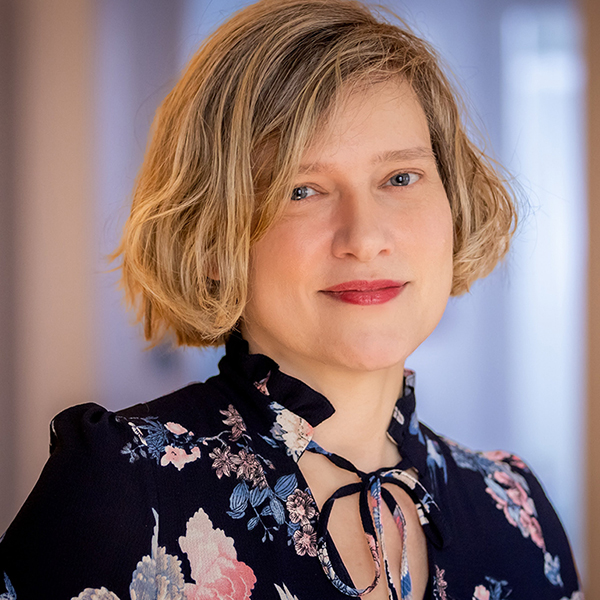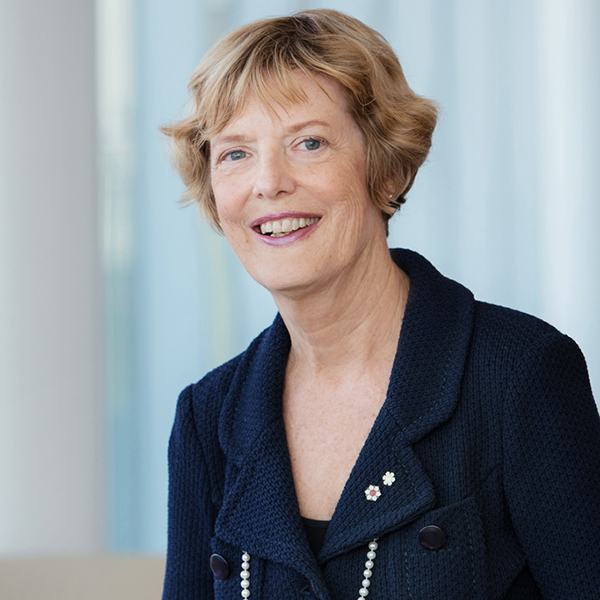Lesley Weir, MLS’79, laughs when asked if she always intended to be a librarian. The McGill alumna, and recently appointed Librarian and Archivist of Canada, recounts that she once wondered aloud what she should do after completing her undergraduate degree in history. Her mother, a former librarian, naturally suggested library school.
“‘Never!’ I said. ‘I’m never going to do that! Never! Never! Never!’”
But then Weir took a part-time job at the Côte Saint-Luc Public Library in suburban Montreal, and she realized “libraries might be cool after all.” But she said nothing to her mother about applying to McGill until after she was accepted. “Because I knew she would think it was all her doing.
“Okay,” Weir admits, smiling, after a pause. “She did have an influence on me, I will say that.”
After gaining her master’s degree in library science from McGill in 1979, Weir worked full-time at the Côte Saint-Luc Library for several years, and then moved to the Ottawa area with her then-husband, where she worked as a librarian for a number of federal government agencies. She was an early digital “systems librarian,” and was instrumental in the founding of the University of Ottawa’s bilingual Master of Library and Information Science (MLIS) program, which launched in 2008, and where she later became a professor.
Weir served as the president of the Canadian Association of Research Libraries from 2007 to 2009. As the head of Canadiana.org, she oversaw the launch of the Heritage Project, an ambitious collaboration with Library and Archives Canada to digitize 60 million heritage archived images and make them widely available. She was the chief librarian of the University of Ottawa from 2003 to 2018.
We recently spoke to Weir about her time at McGill and the future of the vital Canadian institution she now leads.
So how does it feel to be the Librarian and Archivist of Canada?
I have to say that it’s one of those things where people introduce you, and you pause for a second and [think], “Oh, that’s me! Wow!”
What was your time at McGill like?
I did a master’s degree in information and library science starting in 1977, and I graduated in 1979. And while I was there, I also actually worked part-time in the McLennan Library in government documents, which was a very good foundational experience.
I was with a great cohort [in the program]. I think there were about 50 of us in the class [and] I’m still in touch with a number of my colleagues from the school. Of course, being a professional school, sometimes we didn’t feel we quite fit in with the other graduate programs. Because people would say, “Oh a master’s in library science, what is that? What do you learn?” So, we used to do this routine, sort of like stand-up comedy, where we’d say, “Well, right now, we’re doing intermediate shushing! Let me show you my technique!”
Is it true that millennials actually use libraries more than their parents did?
I think that is true. There was a Pew study done in 2014-15 that showed that millennials read more than their parents, which is not the stereotype. They’re the heaviest users of libraries of all generations. While millennials are digital born, they like to gather, to be in community. And libraries are all about community.
So the idea that digital was going to kill the library…
Was completely wrongheaded. In fact, use of the library has increased radically over the last 20 years.
Only about 2.5 percent of the LAC’s holdings have been digitized to date. Why is that?
Year upon year our analog collections keep increasing, which is why we never seem to be able to move the digital percentage very far above about 2.5 or three percent of our collections. We’re hoping that will plateau in 2030, as we start receiving what people call big data, because more and more of our [government] records will come in digital form.
I don’t think people realize how immense the LAC is. It’s the third largest national library in the world, which is quite amazing for a country of 35 million people.
It is quite amazing for a country of 35 million people. But, when you look at our collections, we have 30 million photos. Imagine that! That’s a lot of photos. And 22 million books, 425,000 works of art, 250 kilometres of archival records.
Kilometres? Like highways and railway lines.
Yes. And look at our treasures. We have the Proclamation of the Constitution Act of Canada, the Canadian Charter of Rights and Freedoms. The earliest map that has the word “Canada” written on it. The original scrap of paper with the handwritten “In Flanders Fields” by John McCrae.
How do you tell Canadians about everything you have available?
It’s a big challenge. I think we’re quite successful with our social media. We were digitizing all the records of the Canadian Expeditionary Force in World War One. So, on April 1, [to publicize that], we ‘released’ Wolverine’s World War I military record.
As in, Wolverine the X-Man?
As in the X-Man. And it just went viral. We even got the attention of American late-night talk shows. We have a really great social media team.
Tell us about the LAC’s partnership with the Ottawa Public Library.
It’s a crazy collaboration, crazy-good. We are working with the OPL and the City of Ottawa, where we are building a joint facility on the LeBreton Flats. We’re going to move in in 2024, and it’s going to open in 2025. This is going to revolutionize Library and Archives Canada, because currently we have about 37,000 physical, face-to-face visitors a year, but in the new facility we’re expecting, annually, about 1.7 million people to enter the building. This will expose us to a whole new public.
You have said that it’s important to you that LAC works closely with Indigenous peoples. How are you going about that?
We’ve got a few projects. One is The Naming Project, where we’re taking some our tens of millions of photographs that include Indigenous people, but none of the people in the pictures are named. And we are working with Inuit, Métis and First Nations people to be able to name some of them. These are people, they’re individuals, they’re not subjects.
We’re also doing a project called Listen, Hear Our Voices, where we’re working in collaboration with Indigenous communities to digitize and preserve First Nations languages.
History also usually reflects whoever is dominant. There is much more history about whoever won the wars, and whoever colonized the country, so we’re working very closely with Indigenous peoples to try to be sure that when we look at Canadian heritage, it’s not just the heritage of the colonizers.
Tell us about your new preservation facility that’s being built in Gatineau.
Well, we already have Gatineau 1, an award-winning preservation centre in Gatineau, which is still visited by dignitaries and delegations from around the world, because it’s still viewed as state of the art, even though it’s 23 years old.
But we are building a second preservation centre, Gatineau 2. We broke ground in August 2019, and it’s going to open in 2022. and we’re quite excited about it. Our preservation labs will stay in Gatineau 1, and Gatineau 2 will be more focused on storing collections. Completely carbon net-zero building, and totally robotic. There will be a series of preservation vaults, and a robotic arm will be able to bring a whole vault over for a consultation. It’s going to be super cool!


